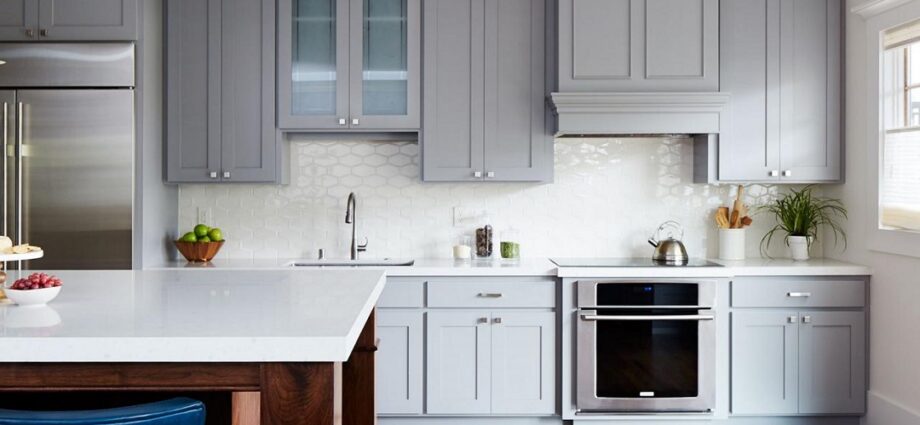Painting kitchen cabinets is a fantastic way to give your kitchen a fresh, updated look without the hefty price tag of a full renovation. Whether you’re looking to brighten up a dark kitchen or add a pop of color to a neutral space, painting cabinets can transform the entire room. With the right tools, materials, and techniques, you can achieve professional-looking results that will revitalize your kitchen and make it feel brand new. Let’s dive into the process of how to paint kitchen cabinets.
Preparing Your Cabinets
Step 1: Remove Hardware and Clean
Start by removing all hardware, including handles, knobs, and hinges, from the cabinets. This will make the painting process easier and ensure a smooth finish. Then, thoroughly clean the cabinets with a mild detergent and water to remove any grease, dirt, or grime. Allow the cabinets to dry completely before proceeding.
Step 2: Sand the Surfaces
Using fine-grit sandpaper or a sanding block, lightly sand the surfaces of the cabinets to roughen up the finish and create a better bonding surface for the paint. Be sure to sand in the direction of the wood grain and remove any dust or debris with a tack cloth.
Step 3: Fill Holes and Gaps
Inspect the cabinets for any holes, cracks, or gaps, and fill them with wood filler or spackle. Once the filler has dried, sand the area smooth and wipe away any excess with a damp cloth.
Painting Your Cabinets
Step 4: Prime the Cabinets
Apply a coat of primer to the cabinets using a high-quality brush or foam roller. Primer helps seal the wood and provides a smooth base for the paint to adhere to. Be sure to choose a primer specifically formulated for use on kitchen cabinets and follow the manufacturer’s instructions for application and drying times.
Step 5: Paint the Cabinets
Once the primer has dried, it’s time to paint the cabinets. Use a high-quality paintbrush or foam roller to apply thin, even coats of paint to the cabinet surfaces. Be sure to paint in the direction of the wood grain and allow each coat to dry completely before applying the next. Depending on the desired color and coverage, you may need to apply multiple coats of paint.
Step 6: Let the Paint Cure
After the final coat of paint has dried, allow the cabinets to cure for at least 24-48 hours before reattaching hardware and reinstalling them in the kitchen. This will ensure that the paint fully sets and hardens, resulting in a durable and long-lasting finish.
FAQs (Frequently Asked Questions)
Can I paint over laminate cabinets?
Yes, you can paint over laminate cabinets, but it’s essential to properly prepare the surface beforehand to ensure adhesion. Follow the same steps for cleaning, sanding, and priming as you would for wood cabinets, and choose a high-quality primer and paint specifically designed for use on laminate surfaces.
How long does it take to paint kitchen cabinets?
The time it takes to paint kitchen cabinets will vary depending on factors such as the size of the kitchen, the number of cabinets, and the drying time between coats. In general, you can expect the process to take several days to a week to complete.
Do I need to seal painted cabinets?
While it’s not always necessary to seal painted cabinets, applying a clear topcoat or sealer can help protect the paint from scratches, stains, and moisture damage. Choose a product specifically designed for use on painted surfaces and follow the manufacturer’s instructions for application.
Can I paint my cabinets without sanding?
While sanding is recommended for achieving the best adhesion and finish, there are alternative methods available for painting cabinets without sanding. Look for specialty primers or paint products that are formulated to adhere to slick or glossy surfaces without the need for sanding.
How can I prevent brush strokes when painting cabinets?
To minimize brush strokes and achieve a smooth finish, use a high-quality paintbrush or foam roller and apply thin, even coats of paint. Work quickly and avoid overworking the paint, as this can lead to brush marks and uneven coverage. Using a self-leveling paint or adding a paint conditioner can also help reduce brush strokes.
In conclusion, painting kitchen cabinets is a cost-effective and relatively simple way to update your kitchen and breathe new life into the space. By following these steps and taking the time to properly prepare and paint your cabinets, you can achieve professional-looking results that will enhance the beauty and functionality of your kitchen for years to come.












